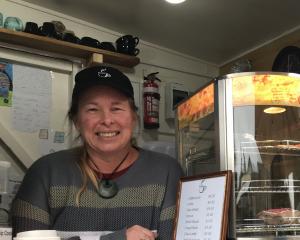
Infinity Investment Group Peninsula Holdings Ltd wants an existing open space boundary in Peninsula Bay moved 150m, which would rezone 4.37ha of land from open space to low density residential, allowing the building of 24 new houses.
On Monday, evidence in support of the boundary change was given with solicitor Lauren Semple saying the development would result in a ''win-win'' for the community.
A panel consisting of David Mead (chairman), Andrew Henderson and Cr Mel Gazzard heard evidence in support of Plan Change 51 on Monday and opposing evidence yesterday.
More than 200 written submissions were received by the Queenstown Lakes District Council rejecting the change.
Bike Wanaka president Jamie Greenway said the organisation completely opposed any plan change and would not compromise in any way.
If the area was left unaltered it would be possible for more bike trails to be built, but if the change was approved, potential recreational use of the site would be lost, he said.
That was despite a commitment from developers to upgrade some of the existing trails, Mr Greenway said.
''We are not willing to compromise in any way. Once it's gone, it's gone,'' he said.
Recreation and tourism consultant Robert Greenway said there would be no loss of existing tracks, and it was unlikely more tracks would be added because the network was already extensive.
To address the loss of future recreational developments, the developers proposed a rule which required a financial contribution of $130,000, or $5417 per lot, towards the development of tracks and trails in the Wanaka area.
Surveyor Michael Botting told the panel existing mountain biking and walking trails had been made without much planning, which added to erosion and safety issues.
New walking tracks would be built and meant walkers and cyclists would be kept separated, he said.
Aspiring Tracks Network chairwoman Ella Lawton said the network remained neutral on the plan change, but was pleased the developers had promised to make improvements to walking tracks in the area, such as the building of a separate walking trail, car park and toilets.
Upper Clutha Environmental Society president Julian Haworth said the negative affect on the ecological, environmental and recreational values of the area by development would outweigh any short-term economic benefit.
''When it's gone, it's gone,'' he said.
Ecologist Dr Gary Bramley in his evidence said about 60% of the native tussock and 50% of the kanuka shrub would be retained, and the removed vegetation would be replanted.
What was replanted would add more environmental value to the area, Dr Bramley said.
If the area was left alone it would be likely the native tussock would be reduced significantly, he said.
Landscape architect Anne Stevens submitted evidence in support of Forest and Bird's opposition to the change and said the tussock in the area had been present since before the arrival of Europeans and had survived until now, despite harsh environmental impacts.
It was one of the few remaining examples of the plant in the area, she said.
The panel will hear from council experts today.
Comments
Dr Gary Bramley is a consultant ecologist with Mitchell Partnerships, who advised in favour of the Riverstone monorail proposal. This does not discount his professionalism, and that of field colleagues investigating environmental impact botanical. Mitchell is not 'Green', per se, but strategic.












